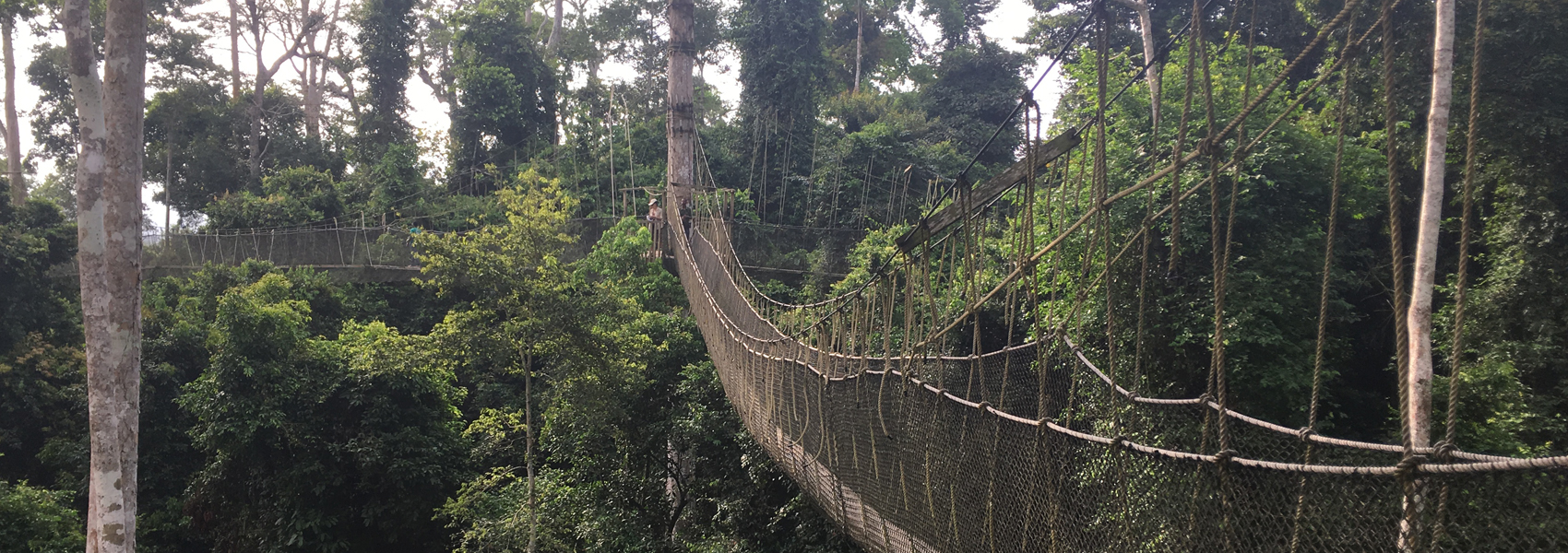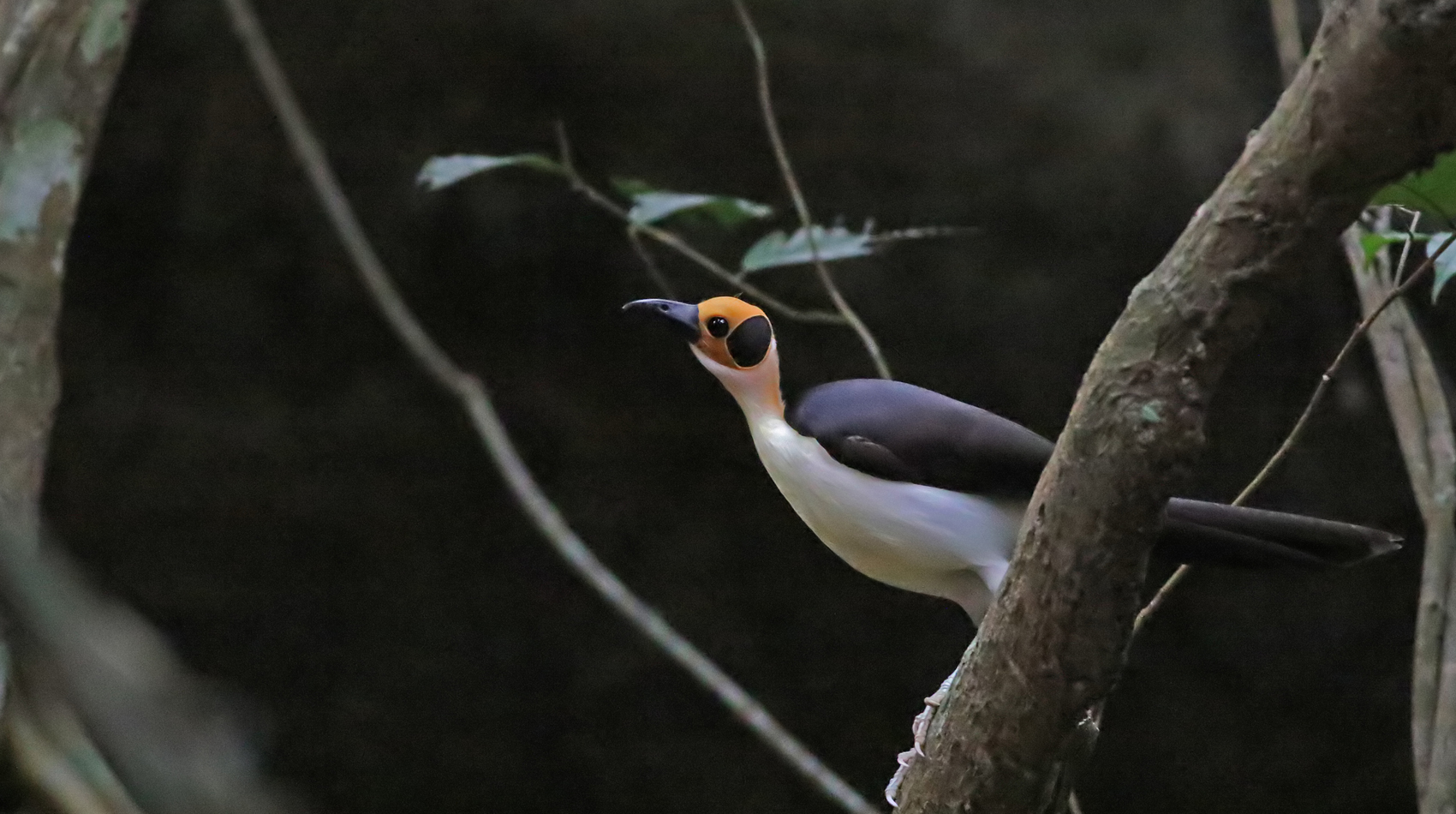
Tour Dates: Thursday 13th February – Saturday 1st March 2025 (Accra to Accra)
Tour Price: £3,995pp plus flight
Estimated Flight Price: London to Accra approx. £700 return
Deposit: £500 per person
Conservation Donation from Wise Birding: £300 – £400
Minimum Number: 6 people
Maximum Group Size: 6 people
Target Species
Birds: Yellow-headed Picathartes, Egyptian Plover, Black Bee-Eater, Blue-moustached Bee-Eater, Standard-winged Nightjar, Brown Nightjar, Red-chested Owlet, Rufous-sided Broadbill, Red-billed Dwarf Hornbill, Black Dwarf Hornbill, Long-tailed Hawk, Congo Serpent Eagle, Great Blue Turaco, Kemp’s Longbill, Grey Longbill, Grey-headed Bristlebill, Yellow-bearded Greenbul and much much more!
Tour Summary
This packed itinerary covers a great variety of habitats with forest, coast & savannah grasslands. We aim to target as many of the speciality birds as possible in this vibrant and very friendly country.
We start at Atewa Forest where we will search for the beautiful Blue-moustached Bee-Eater as well as many other key forest species. A night at Kumasi will give us a quick taste of the birds of Bobiri Forest before we then travel to the arid north and Mole National Park. Here we spend three nights enjoying the wealth of wildlife available. Numerous birds of prey will keep us busy here and as dusk falls the fantastic Standard-winged Nightjar should perform! We then travel further north close to the Burkina Faso border and the Bolgatanga region. Here we should see the stunning Egyptian Plover feeding on the banks of the White Volta River. As we return south a two night stay close to Kumasi will allow us time to explore the excellent birding at Bobiri Butterfly Reserve where we will also try for many nocturnal species such as Brown Nightjar. Probably the highlight of the entire tour will be a visit to the Bonkro forest near Assin Fosu to look for what is probably the most sought after bird in Ghana, the wonderful Yellow-headed Picathartes.
The final part of the tour visits the forests of Kakum and Ankasa. Without doubt one of the tour highlights will be a visit to the canopy walkway suspended some 30 metres above the forest floor allowing eye-level views of some tricky canopy birds. The less visited but fantastic birding site of Ankasa Forest Reserve has some of the best in Ghana and the birds are very special too with many sought after species such as Great Blue Turaco and Hartlaub’s Duck.
Accommodation: 16 nights in Ghana
1 night Accra, 2 nights Bunso, 1 night Kumasi, 3 nights Mole NP, 2 nights Bolgatanga, 2 nights Kumasi, and 1 night Kakum, 2 nights Ankasa and 2 nights Kakum
Inclusive Meals: Full board
DAY 1: Accra
After meeting at Accra airport, we then transfer to an excellent beach hotel. Overnight Accra
DAY 2: Accra – Sakumono Lagoon – Atewa Lowlands
After breakfast we will travel the short distance along the coast to Sakumono Lagoon. This site is a designated RAMSAR site and though it has been drying out in recent years, it still holds some good species. We should see a nice selection of water birds such as Black Heron, African Spoonbill, Glossy Ibis, Marsh Harrier and African Wattled Lapwing to name just a few. We will also be on high alert for vagrants! In recent years this wetland has become a hotspot for nearctic waders with Pectoral Sandpipers and American Golden Plovers being recorded on previous visits. Yellow-throated Longclaws can also be found in the adjacent grasslands.
After lunch we will head north to Atewa and we should have time to do some birding in the lowland “farm bush” areas that often produce a surprisingly good number of species. We will be looking for the commoner species such as Red-rumped Tinkerbird, Speckled Tinkerbird, African Emerald Cuckoo, Western Olive Sunbird, Little Greenbul, Whistling Cisticola, Compact Weaver, Grosbeak Weaver, Simple Leaflove, Magpie Mannakin and African Hobby. Overnight Bunso
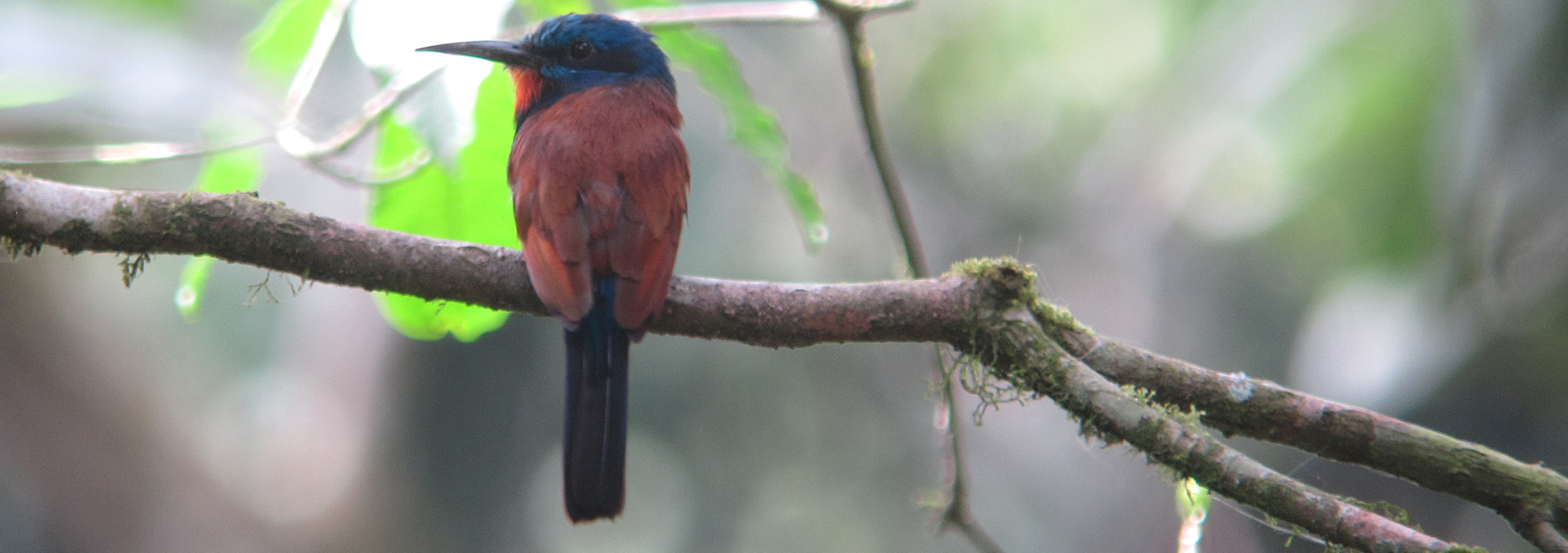
DAY 3: Atewa Lowlands – Atewa Ridge
Today we will spend the day at Atewa and head to the top of the ridge where it is one of the only places in Ghana to find the fantastic Blue-moustached Bee-eater.
Today we have the whole day to do a fairly steep climb for approximately 6Km up the main forest track. However, once at the top of the ridge it will certainly be worthwhile as we spend the day birding the forest. There are many specialities to be found here, similar to the species that occur in Kakum, but sometimes easier to see! However, it is the stunning Blue-headed Bee-Eater that will be worth the walk alone, as this is one of the only places in Ghana that this beautiful Bee-Eater is found. The birds can often be watched hawking insects just metres away from us. Another speciality of Atewa is the Nimba Flycatcher that we will be very lucky to see, but we will certainly be looking out for its unique habit of running along branches in search of insects. Other species that we may see here include, Long-tailed Hawk, African Crowned Eagle, Rufous-sided Broadbill, Olive-Green Camaroptera, Kemp’s Longbill, White-tailed Alethe, Western Bronze-naped Pigeon, Olive Long-tailed Cuckoo, Red-chested Cuckoo, Red-cheeked Wattle-eye, Chocolate-backed Kingfisher, Black-capped Apalis, and maybe even the rare Yellow-footed Honeyguide. Overnight Bunso
Day 4: Atewa – Bobiri Forest
This morning we will still have time to return to the Atewa lowland farmbush for any species that we missed and then in the afternoon we will continue north to the outskirts of Kumasi and the wonderful Bobiri Forest.
Bobiri Forest is a fabulous forest and the potential species list here is endless and the nocturnal birding is very exciting too. We will make a special effort to try for both Brown Nightjar and both Fraser’s and Akun Eagle Owls. Overnight Kumasi
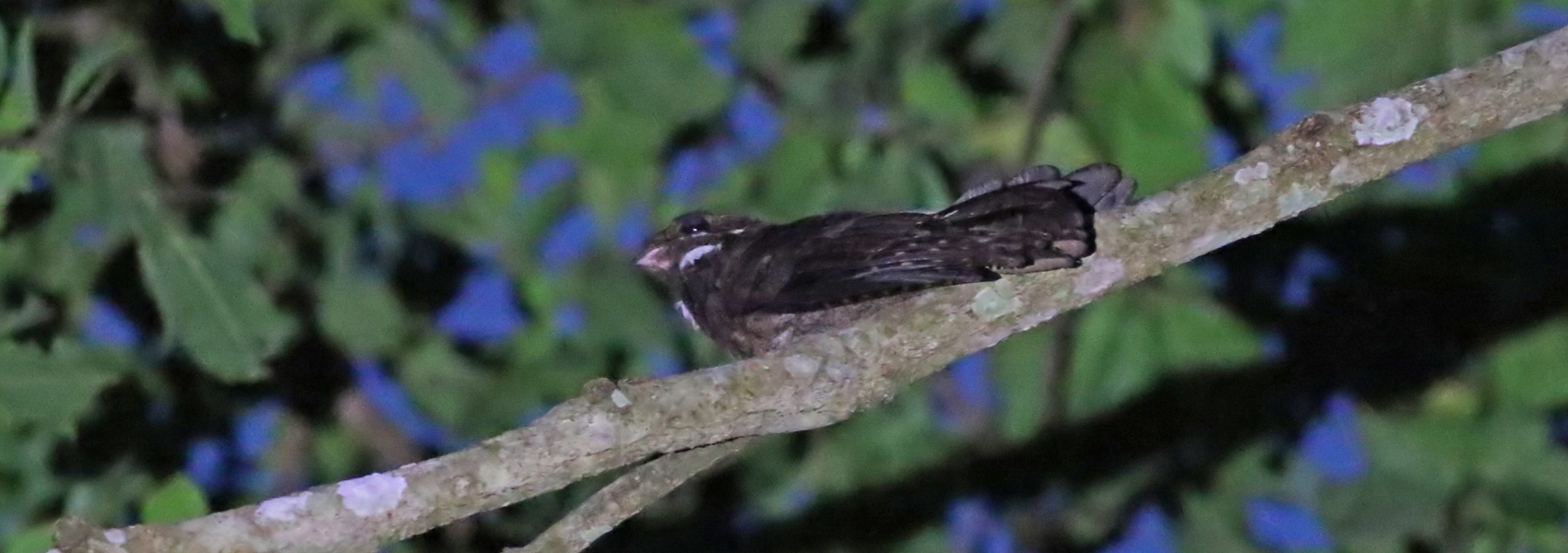
DAY 5: Opro Forest – Mole National Park
We will set off from Kumasi relatively early as we make the long journey north to Mole National Park. It will be mostly a day of travel, but if time allows we will stop at the Opro Forest en route where we reach the transitional zone between forest and savannah. The long journey will be worth it as we leave the Upper Guinea Forests behind us and enter the Guinea Savannah Belt. As the habitat begins to change we will encounter many different birds such as the Grasshopper Buzzard, the exceptionally beautiful Blue-bellied Roller, the dazzling Scarlet-chested Sunbird and classic wooded savannah species such as Yellow-fronted Tinkerbird and White Helmetshrike. We hope to arrive at the park by the early evening where we will check into the Mole Hotel. It is situated in a prime position nestled on top of an escarpment overlooking a waterhole. Overnight Mole National Park
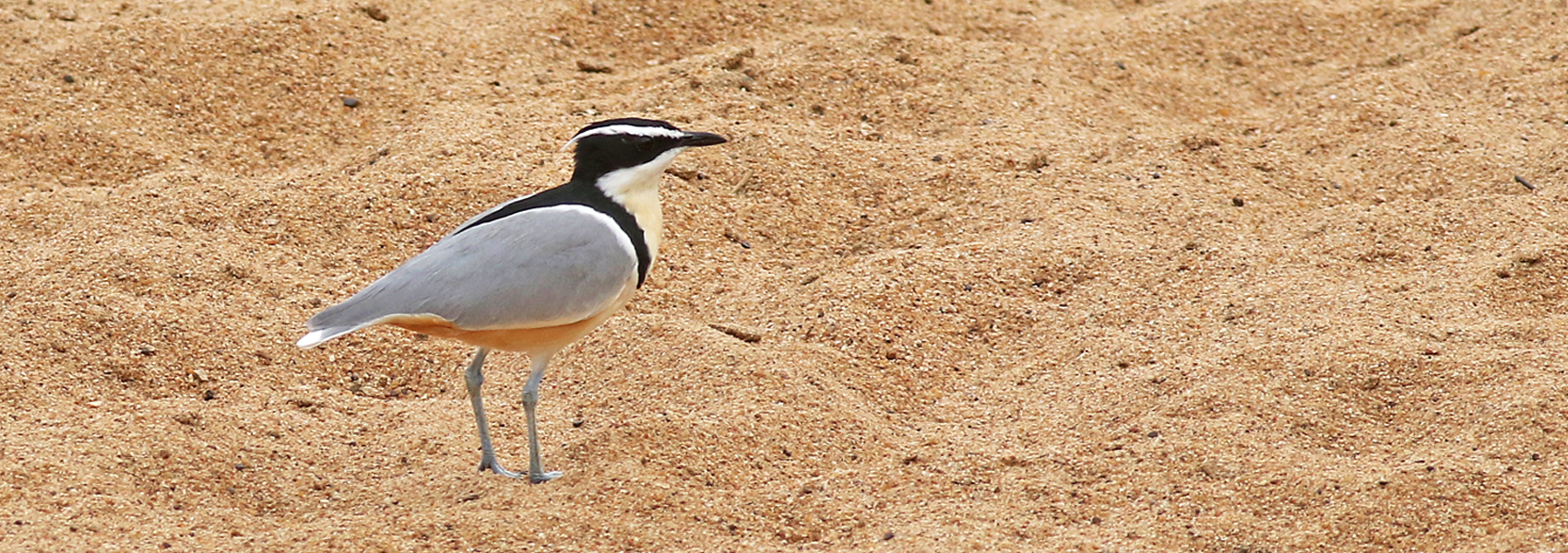
DAYS 6 – 7: Mole National Park
Mole has so many quality species our first morning is sure to be an exciting one. Of course it is not just birds that are found in Mole, in fact Mole is probably more famous for its elephants that we could see as we begin our day just metres from our rooms overlooking the waterhole. Other mammals we should see from our viewpoint include, Common Bushbuck, Kob, Waterbuck and Common Warthog. The lodge itself is a superb place to begin birding. We will check any puddles for drinking Seedeaters where we hope to find a good mix of species. These may include, Lavender Waxbill, Red-cheeked Cordon-bleu, Red-billed and Bar-breasted Firefinches, Pin-tailed and Long-tailed Paradise Whydahs, Chestnut-crowned Sparrow-Weaver and Yellow-fronted Canary. Later in the morning we will visit the area below the rocky escarpment to find family groups of Stone Partridge, Double-spurred Francolin and Cinnamon-breasted Bunting.
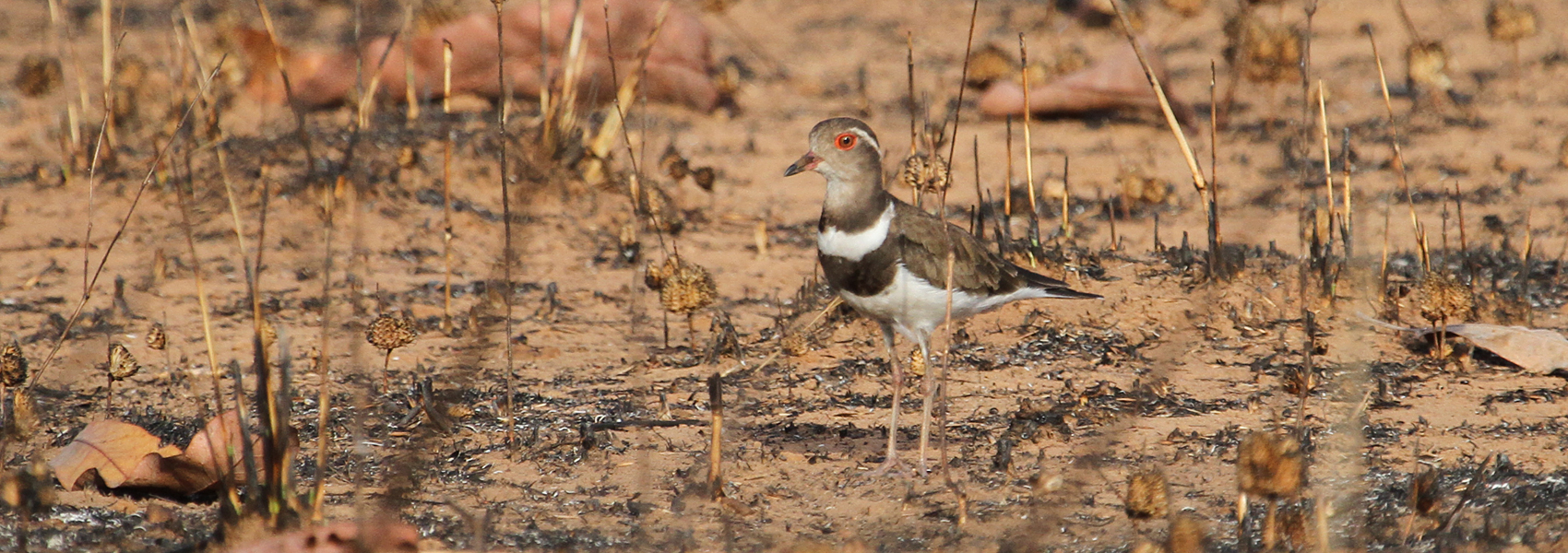
There are many targets all in the near vicinity of the lodge and we will focus on the specialities of the area. No doubt the giant and prehistoric looking Abyssinian Ground Hornbill will be at the top of the wish list as well as Oriole Warbler, stunning Long-tailed Glossy Starlings or Red-billed Hornbill. Dependent on the rainfall and the amount of standing water, we may even be very lucky and find one of the best prizes in the whole of Mole, the Pel’s Fishing Owl that sometimes roost in the trees close to the waterhole.
During the next two days we will spend time exploring the different areas within the Mole NP searching out the savannah specialities, many of which are very colourful like the lime and yellow Bruce’s Green Pigeon or the stunning Violet Turaco. Other species that we will spend time looking for whilst in the park include, Blue-breasted and Grey-headed Kingfishers, Red-throated and Northern Carmine Bee-eaters, Abyssinian, Purple, Broad-billed and Blue-bellied Rollers, Bearded Barbet, Violet-backed, Green-headed, Pygmy, Beautiful and Splendid Sunbirds, Orange-breasted and Grey-headed Bushshrikes, Greater Blue-eared, Lesser Blue-eared and Purple Glossy Starlings. Target species in the woodlands are endless too with species like Green Wood Hoopoe, Black Scimitarbill, Greater and Lesser Honeyguides, Brown-backed Woodpecker, Red-shouldered Cuckoo-shrike, Yellow-throated Leaflove, Yellow-bellied Hyliota, Northern Black, African Blue, European, Pied and Swamp Flycatchers, White-crowned Robin-Chat, Brown-throated Wattle-eye, Senegal Batis, Blackcap and Brown Babblers, White-winged Black Tit, Spotted Creeper, African Golden Oriole, Northern Puffback, Yellow-billed Shrike, Brubru, Red-headed Weaver, Black-faced and Black-bellied Firefinches and Brown-rumped and Cabanis’s Buntings.
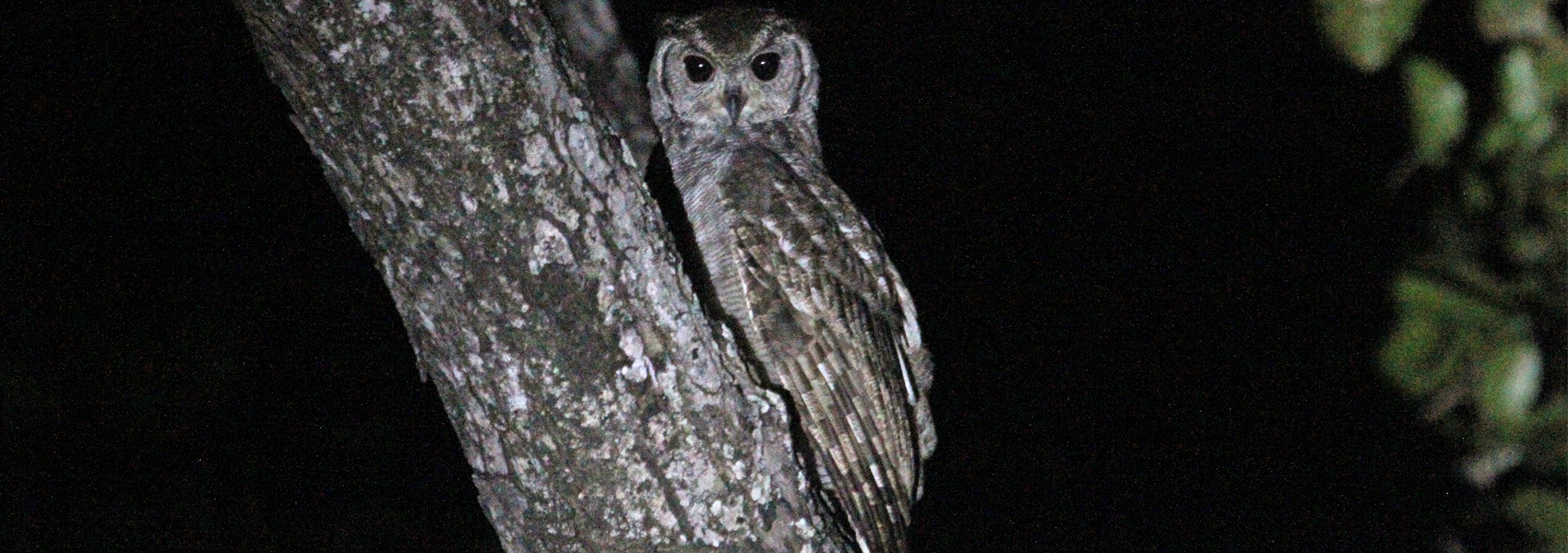
Raptors are a real treat to see in Mole and we will be spoilt for choice. Regularly encountered species include, White-backed, White-headed and Hooded Vultures, Short-toed, Beaudoin’s and Brown Snake Eagles, Bateleur, Lizard Buzzard, Wahlberg’s and Martial Eagles, Ayres’s and African Hawk-Eagles, Lanner Falcon and African Hobby.
Finally, we will spend at least one night searching for some of the nocturnal species that can be found in the park. Greyish Eagle Owls are common and we should also find Long-tailed Nightjar. However, the real star of the show will be the performance from a male Standard-winged Nightjar as it dances down the Mole airstrip! Overnight Mole National Park
DAY 8: Mole – Tamale – Tongo Hills
Mostly a travel day with a lunch stop in Tamale and by the late afternoon we should arrive at the Tongo Hills. Our journey continues north into the hot, dry Upper East region. We will pass through good habitat and will be on the lookout for further quality savanna woodland birds. Rufous-crowned and Blue-bellied Roller, the ever present Grasshopper Buzzards and the odd Dark Chanting Goshawk that can often be found sat by the roadside. In the afternoon, we will visit the Tongo Hills where speciality birds we will look for include Fox Kestrel, Chestnut-bellied Starling and Lazy Cisticola before arriving in Bolgatnga. Overnight Bolgatanga
DAY 9: Tono Dam – White Volta River
This morning we will head out early to the Tono Dam. Here specialities may include, Four-banded Sandgrouse, Black-headed Lapwing, Spotted Thick Knee and Black-faced Qualfinch. After lunch, we drive to the White Volta River where we hope to find what must surely be one of the trip highlights as we search a number of spots for the beautiful Egyptian Plover! This species is also known as the Crocodile Bird because of its alleged symbiotic relationship with crocodiles. Birds were believed to feed on the flesh caught in the teeth of crocodiles! Overnight Bolgatanga
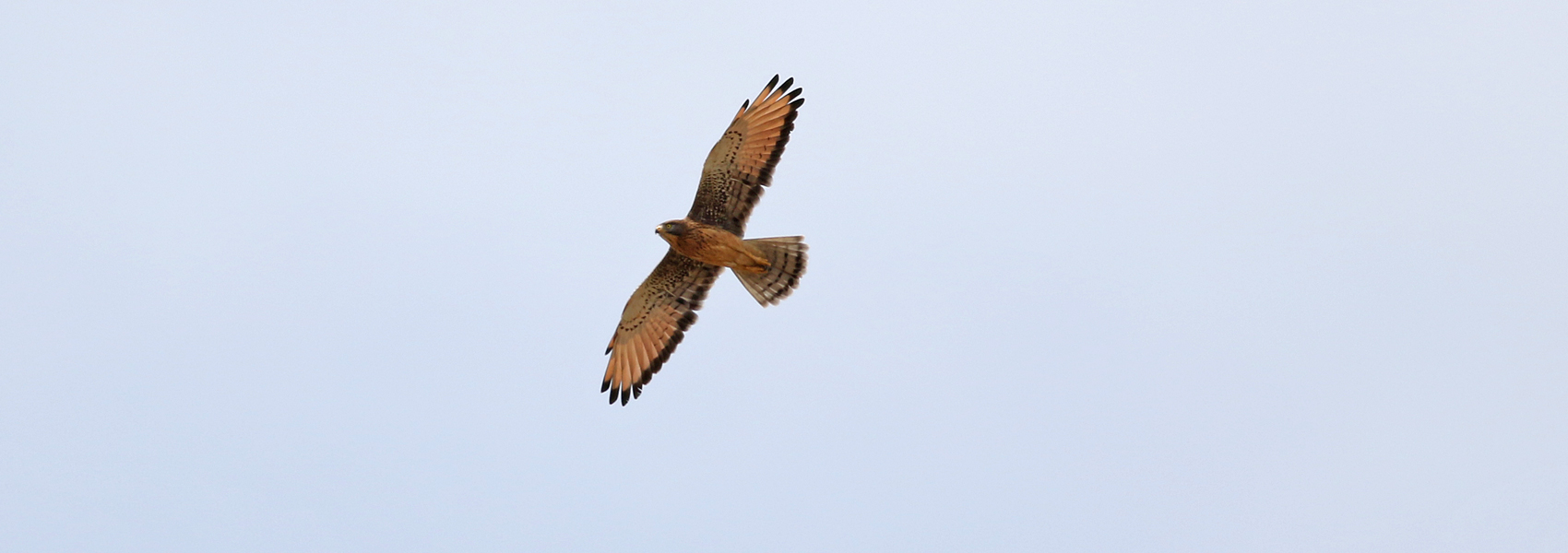
DAY 10: Bolgatanga – Kumasi
This is mostly a day of travel as we take the long journey south back to Kumasi. Overnight Kumasi
DAY 11: Bobiri Forest
Bobiri Forest has some extreme quality species and with a full day here we hope to find some of the many great birds such as Black Dwarf Hornbills, Red-billed Dwarf Hornbill, African Piculet and maybe the very rare Yellow-footed Honeyguide. The forest is also good for Red-chested Owlet and still has African Grey Parrots that have sadly declined drastically over the last few years. In the evening we will try for Brown Nightjar and Fraser’s Eagle Owl. Overnight Kumasi
DAY 12: Kumasi – Nyamebe – Bonkro – Kakum
Today is all about a must see species and probably the most desired bird species for any birding trip to Ghana, the fantastic Yellow-headed Picathartes. However, beforehand we will visit the Nyamebe Forest where we may find Yellow-throated Cuckoo.
After lunch we will make our way to the village of Bonkro and begin our walk into the forest where a breeding colony of Yellow-headed Picathartes can be found. This for many will be the undoubted highlight of the tour as we get to spend an afternoon searching for this amazing bird. These unique cave nesting birds regularly return to their nests to roost before dark. Often birds visit early to see it is safe to roost and we should be treated to excellent views as these magical birds literally bounce from vine to vine just metres in front of us! We then take the long journey to Kakum Forest. Overnight Kakum Forest
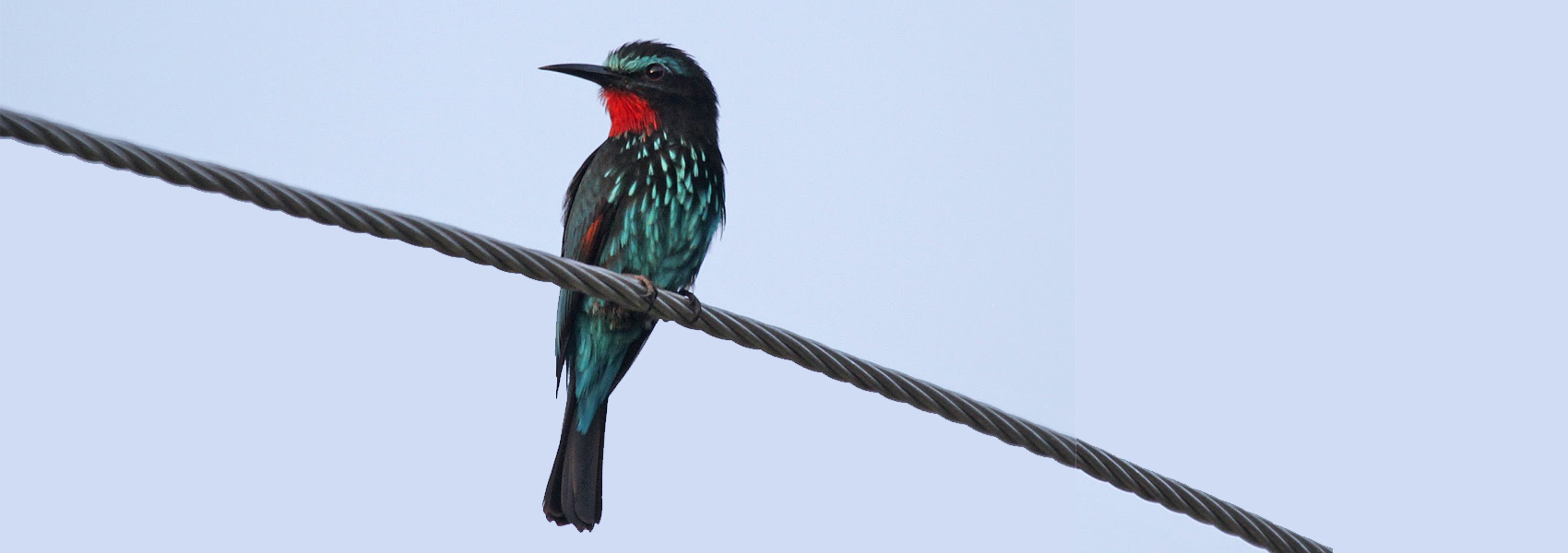
DAY 13: Abrafo Forest – Takoradi – Ankasa Forest
We will spend the morning birding a different section of Kakum Forest where we will try for Rosy Bee-Eaters as well as other forest species like Forest Robin, Chocolate-backed Kingfisher and numerous skulking Greenbuls including Little Grey Greenbul, Cameroon Sombre Greenbul, Icterine Greenbul and Golden Greenbul to name but a few!
By midday we will be on our way heading further west, towards Ankasa. Although mostly a travel day, we will still have plenty of opportunities for birding en route as we make roadside stops for some key sunbirds, namely Brown Sunbird and Reichenbach’s Sunbird. Overnight near Ankasa
DAY 14: Ankasa Wildlife Reserve
Ankasa Wildlife Reserve was established in 1976 the 490 sq. km Park incorporates the former Nini-Suhien National Park. The forest is virgin evergreen rain forest with exceptional botanical species as well as birds! The Park is often left out of many Ghana birding itineraries, but holds probably some of the best and most exciting birding in the country. We will spend the day and the following morning exploring the park, leaving our hotel very early in the morning and targeting the key species found here amongst the forest and small pools. Targets will include, Hartlaub’s Duck, African Finfoot, Spot-breasted Ibis, Dwarf Bittern, White-bellied Kingfisher, Great Blue Turaco and the very rare White-breated Guineafowl. The list in the park is endless and we can focus on the trickier species such as Yellow-bearded Greenbul, Green-tailed Bristlebill and we might even get lucky with Red-fronted Antpecker, Latham’s Forest Francolin, Red-chested Owlet or some of the more skulking Illadopsis! We will spend an evening searching for the many exciting night birds that Ankasa holds too. We hope to find Akun Eagle Owl, African Wood Owl, Brown Nightjar or even Nkulengu Rail. Ankasa also holds some impressive mammals such as Forest Elephant, Bongo and even Chimpanzee, though we would be exceptionally lucky to see these species. Overnight near Ankasa
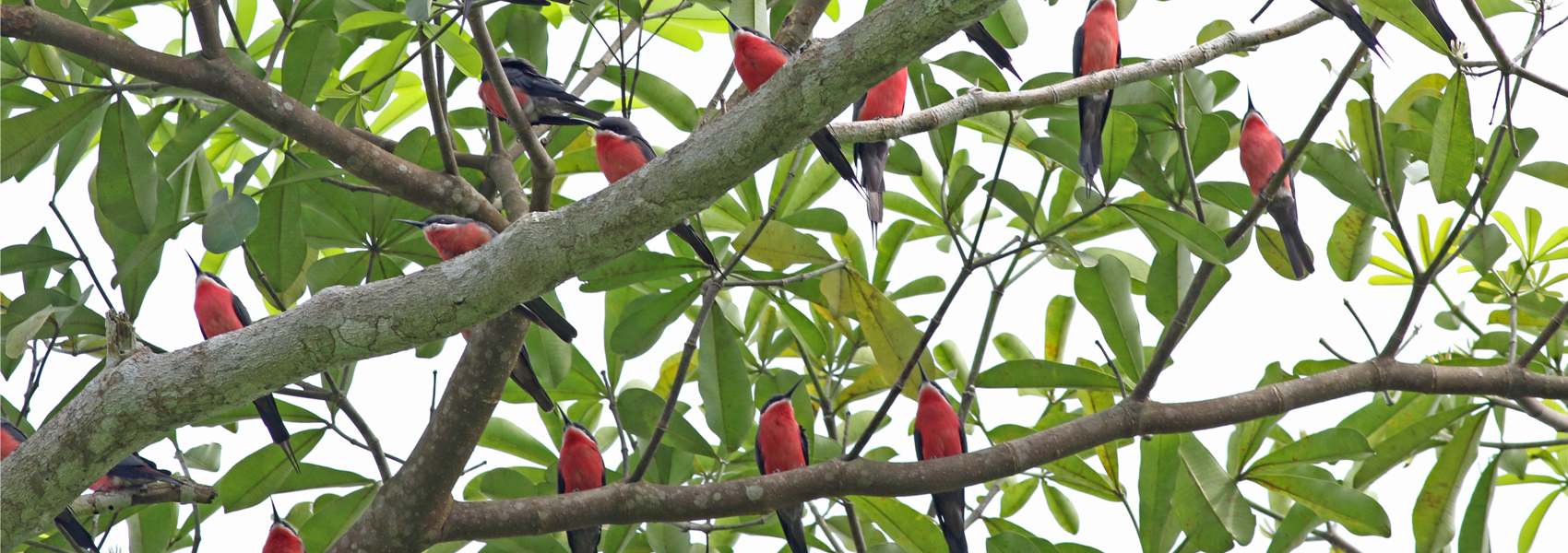
DAY 15: Ankasa Wildlife Reserve – Brenu Beach Road – Kakum
We have one last morning in Ankasa before arriving back at Kakum in good time to explore more of this great area. Many species are possible including highly prized species such as the stunning Black Bee-Eater, Rosy Bee-Eater, the near endemic Buff-throated Sunbird, Fraser’s Forest Flycatcher, Sabine’s Puffback, Little Green Woodpecker, Fire-bellied Woodpecker and Red-thighed Sparrowhawk. Dependent on our success with forest specialities, we may have time to visit the Cape Coast where we hope to increase our species further and have a break from forest birding. Highlights are sure to include some varied species such as Grey Kestrel, Green Turaco, Marsh Tchagra, Double-spurred Francolin, Common Gonolek and Preuss’s Cliff Swallow as they come in to roost. In the evening, we may try for further night birds in Kakum that might have eluded us so far. Long-tailed Nightjars can often be found very close to our hotel. Overnight Kakum Forest
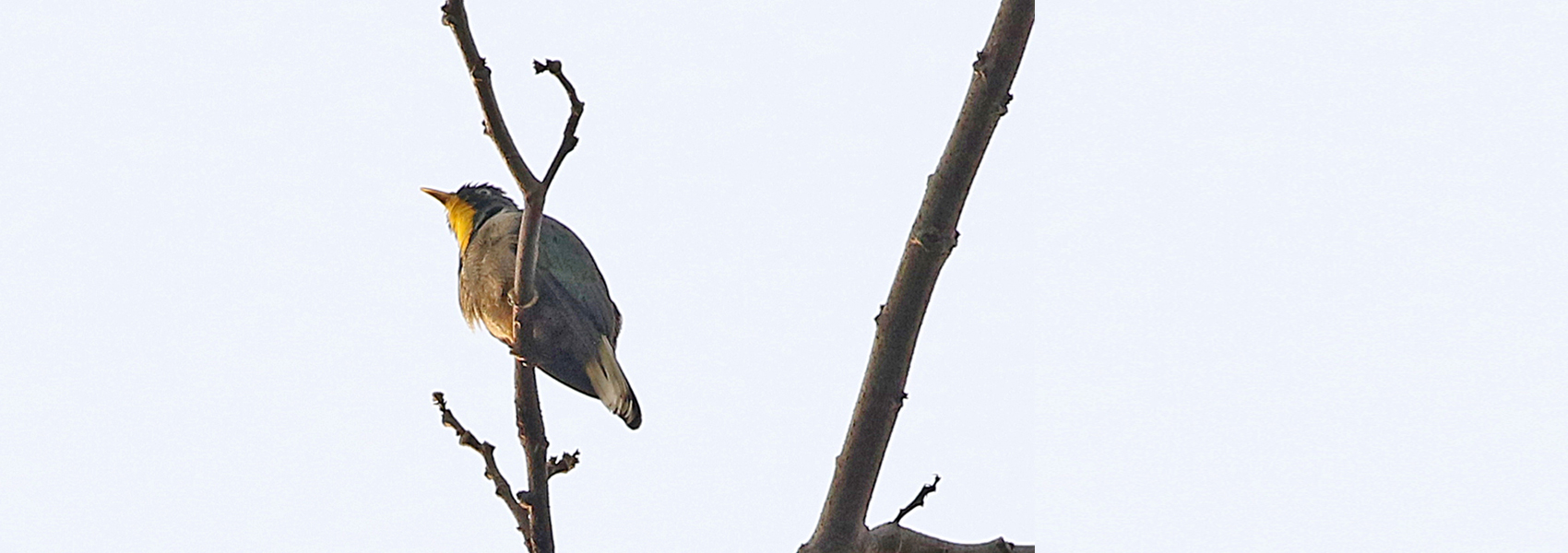
DAY 16: Kakum National Park
Kakum Forest is a fantastic forest reserve crammed full of many great birds many of which can be tough to see. However, we will spend much of our time on the canopy walkway suspended some 30M above the forest floor. This allows us the best chance to find many of the great species that live here. Specialities that we hope for include the gentle giants of the forest with both Yellow-casqued and Black-casqued Hornbills and maybe even the endemic Brown-cheeked Hornbill. The fantastic White-crested Hornbill with its unmistakable long tail will be high on many people’s target lists, as will the beautiful Long-tailed Hawk. Yellow-billed Turacos will flash their crimson wings at us as they fly below us, Rosy Bee-Eaters will hawk above the clearings, the amazing Blue Cuckoo-Shrike should give itself away by its song and colourful Malimbes will entertain us in the vine tangles. The distinctive song of the Sharpe’s Apalis should lead us to this endemic and maybe the stunning Fire-bellied Woodpecker too. The possibilities are endless from the walkway with very rare species such as the Congo Serpent Eagle seen on occasions as well as commoner species like the stunning Blue-throated Roller. Mammals are possible too and monkeys can often be seen from the walkway with both Lesser Spot-nosed Monkey and the superb Black and White Colobus! It will certainly be an unforgettable experience.
An evening visit to Kakum will hopefully allow us to find some of the nocturnal specialities of the park with highly sought after species such as the beautiful Fraser’s Eagle Owl. Nocturnal mammals are also possible with species like the elusive Pel’s Anomalure, a species of Giant Squirrel and Common Potto. Overnight Kakum Forest
DAY 17: Kakum National Park – Winneba Plains – Accra
An optional final early morning visit to the canopy walkway may reveal some more species that we are missing. The canopy walkway always gives new species and there is a good chance for large Hornbills, like the Upper Guide Forest endemic, Brown-cheeked Hornbill as well as Red-billed Dwarf Hornbill and maybe Western Yellow-billed Barbet.
We will leave our accommodation by mid morning and head for Accra, though a final birding stop at the Winneba Plains should hopefully produce just a few more new birds! These may include Striped Kingfisher, Double-toothed Barbet, Flappet Lark, Short-winged Cisticola, Green-headed Sunbird, and Splendid Sunbird. We will arrive at our hotel on the coast where we will have plenty of time for a shower and to re-pack before a final meal. We then transfer to Accra airport where the tour concludes.
Please note this is a flexible itinerary which may need to be adjusted slightly dependent on arrival / departure times, weather conditions and the most recent information from our local guides
Leaders: Wise Birding leader and local guide Robert Ntakor
Included in cost: Accommodation in twin en-suite rooms, all meals, bottled water, all entrance fees, ground transport and services of leaders
Not included in cost: International airfare, travel insurance, drinks other than water and any airport/visa fees
Single Supplement: £350
Transport: A/C Coach throughout the tour
Difficulty: Moderate
Daily walking of up to 3 – 4Km a day on wide forest trails. The walk to the Picathartes site takes around 45 minutes at slow pace. Atewa is the toughest walk being a round trip of 12Km. It is 6Km up a gradual sloping hill on a main forest track and then returning the same way.
Climate: Hot & humid in the south and dry and hot in the north. Some rain mainly in small bursts in the afternoon.
Tour Start Point: Accra airport, Ghana
Tour End Point: Accra airport, Ghana
Suggested Airlines: British Airways
